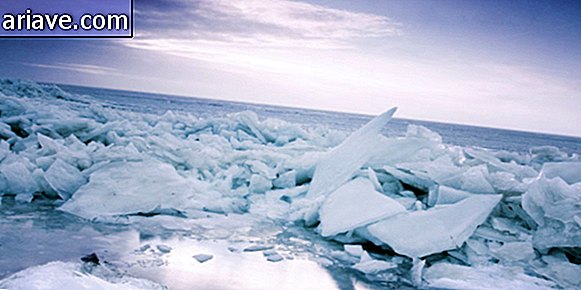Mysterious marine predator swallows shark deep in the ocean
Australian researchers are astonished and without any reasonable explanation for something quite curious that occurred off the coast of Australia. A female white shark of about three meters was marked with a tracker for scientists to study its behavior, and identify which areas the animal travels during the year.
It turns out that four months after inserting the tracker, it was located on any beach in the country. When the location and route data were revealed, the result was daunting. The rig has recorded sudden temperature rises from 7 ° C to 25 ° C - which seems to indicate that the shark has been swallowed by some kind of giant predator, as such a temperature can be obtained within the stomach of predators.
Soon after the sudden increase in temperature, the white shark was dragged deep into the ocean by its possible predator, reaching more than 580 meters deep from its original position. After that, other depth variations were recorded, and the tracker was finally released to the surface later. In the video provided by the Smithsonian Channel, we can see the Australian researchers themselves commenting on the fact:
Update: Explanations have already been given.
It seems the mystery of this deep-sea monster has finally been revealed, and it's not all that fantastic - at least for those who were imagining bizarre shark-eating creatures. According to the researchers, this abyssal superpredator is another white but overly large and anthropophagous shark. It was defined as a "colossal cannibal white shark".
After studying white shark migration routes, the researchers identified that the animal that died was swimming in the waters of other groups of white sharks. Biologists say the data is matched by information that has already been recorded from a giant shark off Australia's shores. According to estimates, this animal can exceed five meters in length and weigh more than two tons.
Based on this data, it is possible that it fed from another white shark and traveled the depths that were measured by the tracker. And the bigger the shark, the bigger the stomach. The high temperatures recorded also match the temperatures that are reached inside the stomach of these animals, which reinforces the fact that one giant white shark may have fed on another.
Sharks attacking sharks?
As to why a white shark attacked a predator of the same species, there are some explanations. They may have fought and disputed that aquatic territory. In addition, the giant shark might have been starving and not bothering to eat a similar animal.
It is worth remembering that the white shark is also known to perform intrauterine cannibalism (other shark species also have this custom, but in the case of the white shark this is not 100% confirmed, although it is very likely). When the first of the eggs hatches in its mother's womb, the little shark feeds on its unborn siblings and grows on the proteins provided by the weaker eggs that did not hatch (or were unlucky to hatch later). Yes, cannibalism between siblings.
Based on these and other factors, the hypothesis of being an act of cannibalism is also well accepted in the case of this giant white shark.











